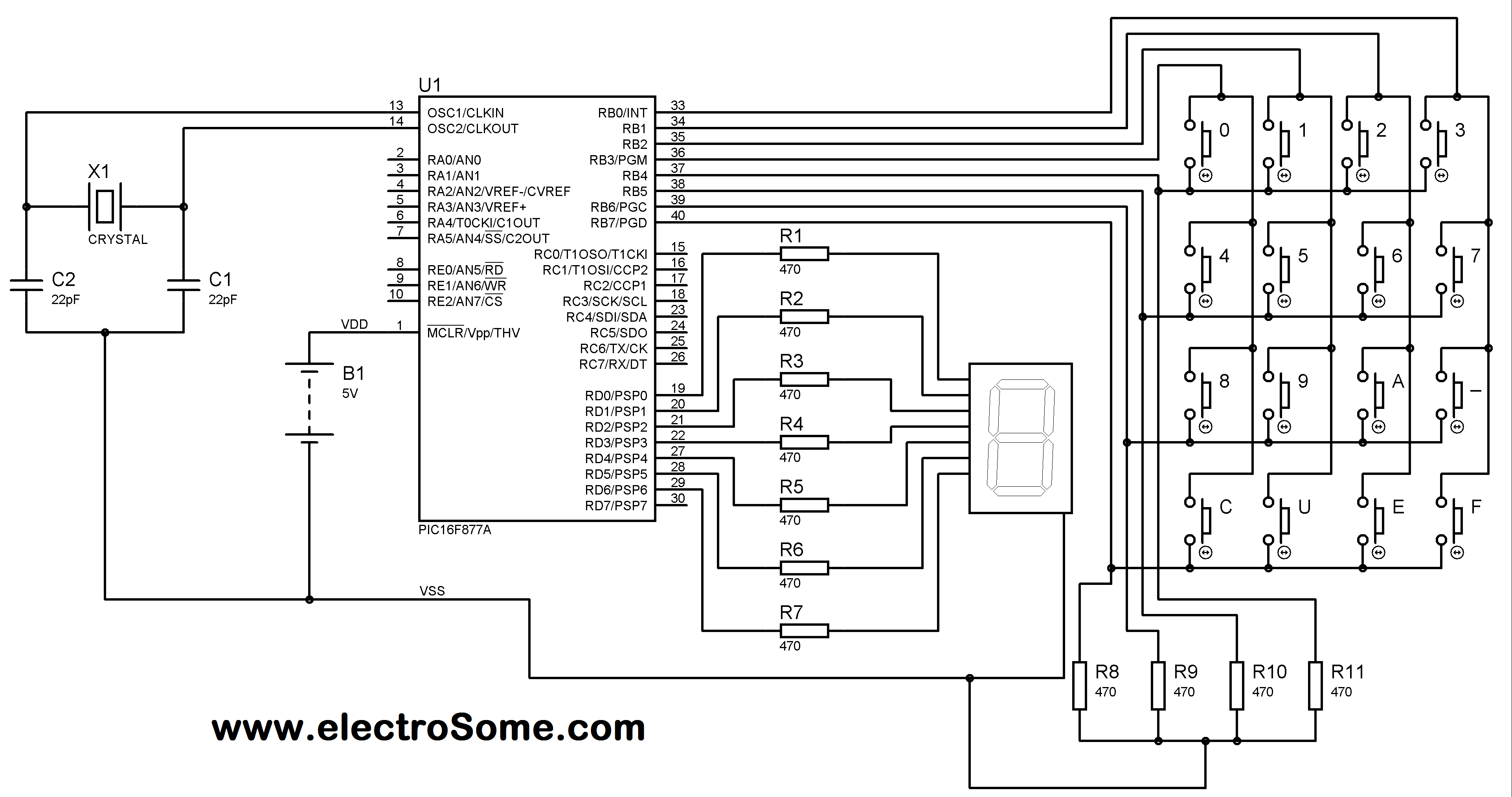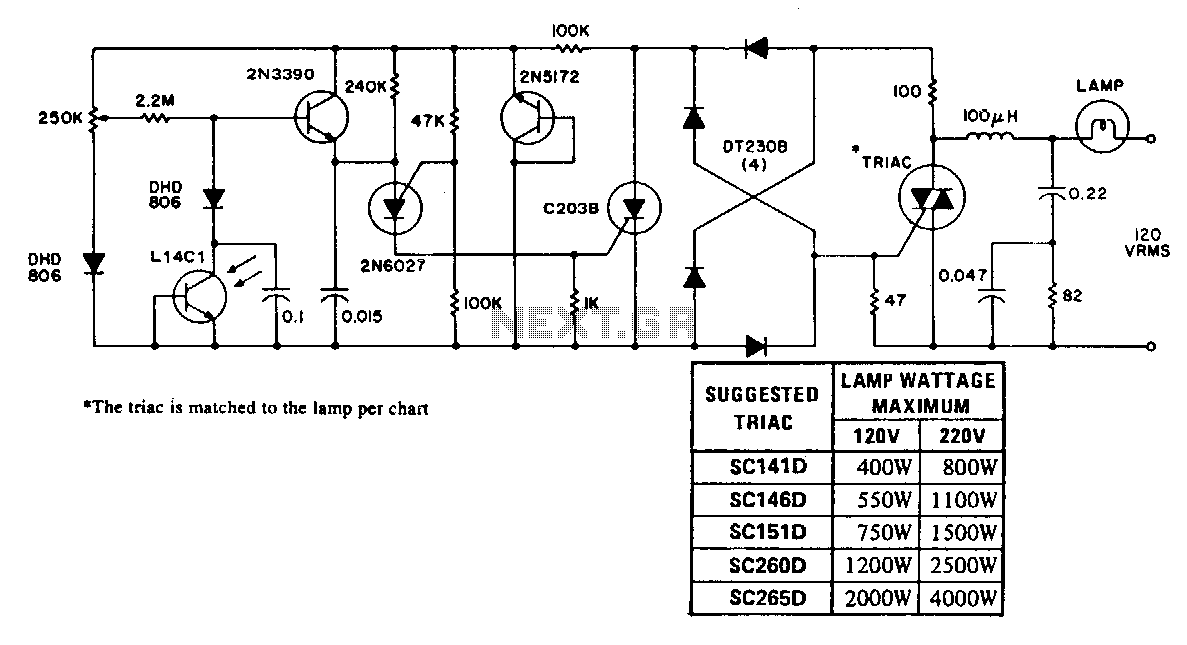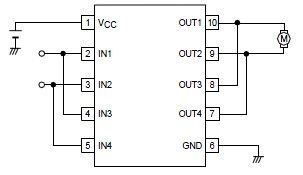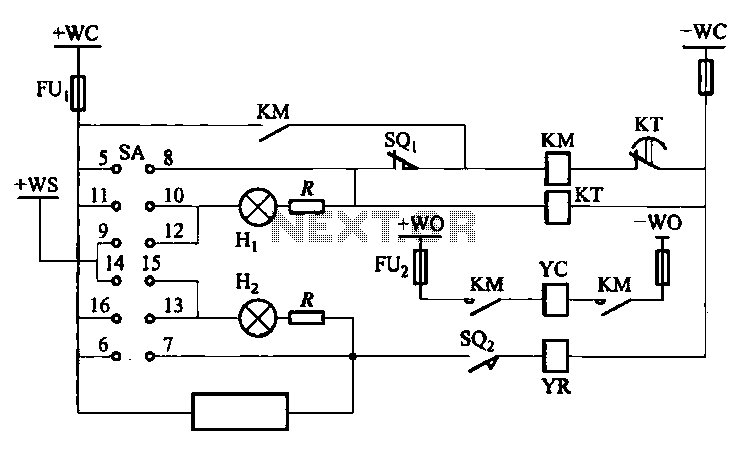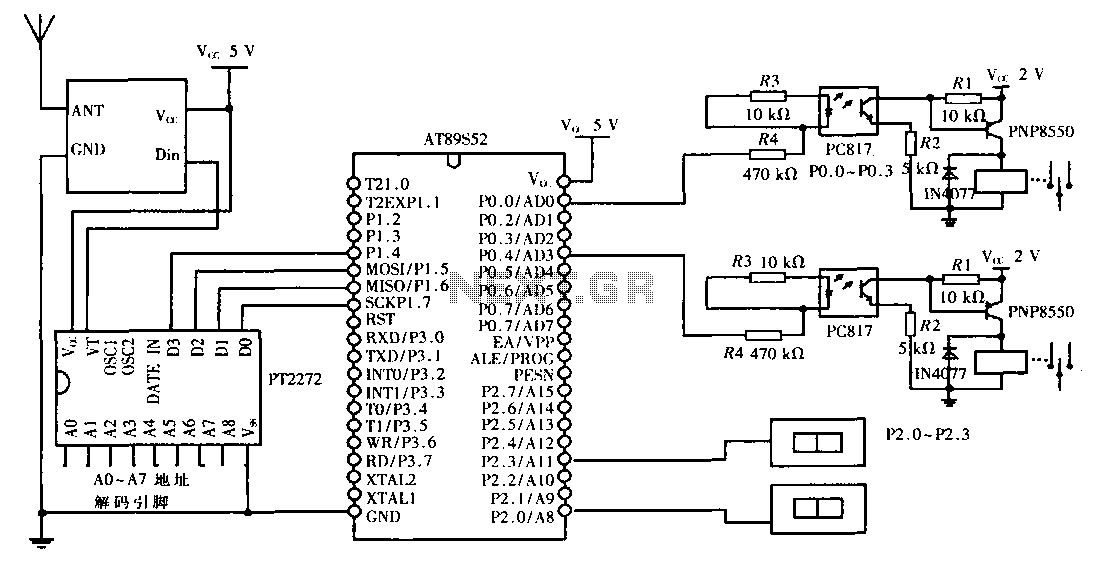
Windshield wiper control
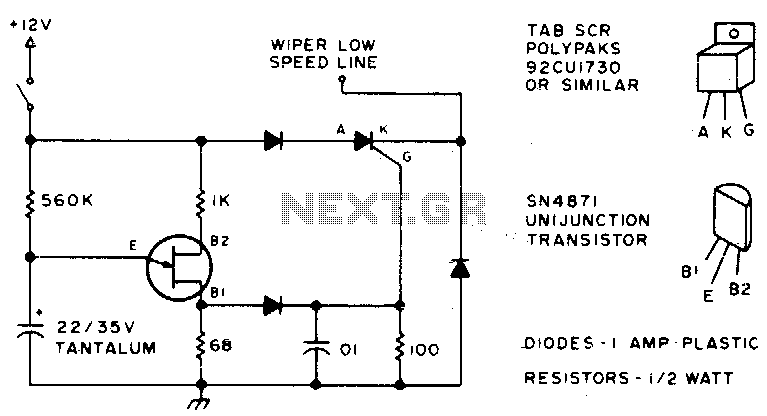
Here is an effective method to configure windshield wipers using an interval circuit. This setup requires only two connections to the car's wiper control, in addition to a ground connection. Variable control can be achieved by replacing a 560 K resistor with a 500 K potentiometer in series with a 100 K fixed resistor.
The interval wiper circuit provides an efficient way to manage the operation of windshield wipers, allowing them to operate intermittently rather than continuously. The circuit typically involves a timer IC, such as the NE555, configured in astable mode to generate a pulse-width modulation signal. The two connections to the car's wiper control allow the circuit to interface directly with the existing wiper motor control system.
The ground connection is essential for establishing a common reference point for the circuit. The use of a potentiometer (500 K) in conjunction with a fixed resistor (100 K) enables the user to adjust the interval timing of the wipers. By varying the resistance, the timing can be tailored to suit different weather conditions or personal preferences.
In practical implementation, the circuit may include additional components such as diodes for protection against back EMF generated by the wiper motor, as well as capacitors to stabilize the power supply and filter out noise. The choice of components should be made with consideration of the specific vehicle's electrical characteristics to ensure compatibility and reliability.
Overall, this circuit design offers a straightforward solution for enhancing windshield wiper functionality, providing drivers with improved visibility during adverse weather conditions.Here"s a good way to set windshield wipers on an interval circuit. Only two connections to the car"s wiper control, plus ground, are required Variable control can be accomplished by substituting a 500 K pot in series with a 100 K fixed resistor in place of the 560 K. 🔗 External reference
The interval wiper circuit provides an efficient way to manage the operation of windshield wipers, allowing them to operate intermittently rather than continuously. The circuit typically involves a timer IC, such as the NE555, configured in astable mode to generate a pulse-width modulation signal. The two connections to the car's wiper control allow the circuit to interface directly with the existing wiper motor control system.
The ground connection is essential for establishing a common reference point for the circuit. The use of a potentiometer (500 K) in conjunction with a fixed resistor (100 K) enables the user to adjust the interval timing of the wipers. By varying the resistance, the timing can be tailored to suit different weather conditions or personal preferences.
In practical implementation, the circuit may include additional components such as diodes for protection against back EMF generated by the wiper motor, as well as capacitors to stabilize the power supply and filter out noise. The choice of components should be made with consideration of the specific vehicle's electrical characteristics to ensure compatibility and reliability.
Overall, this circuit design offers a straightforward solution for enhancing windshield wiper functionality, providing drivers with improved visibility during adverse weather conditions.Here"s a good way to set windshield wipers on an interval circuit. Only two connections to the car"s wiper control, plus ground, are required Variable control can be accomplished by substituting a 500 K pot in series with a 100 K fixed resistor in place of the 560 K. 🔗 External reference

